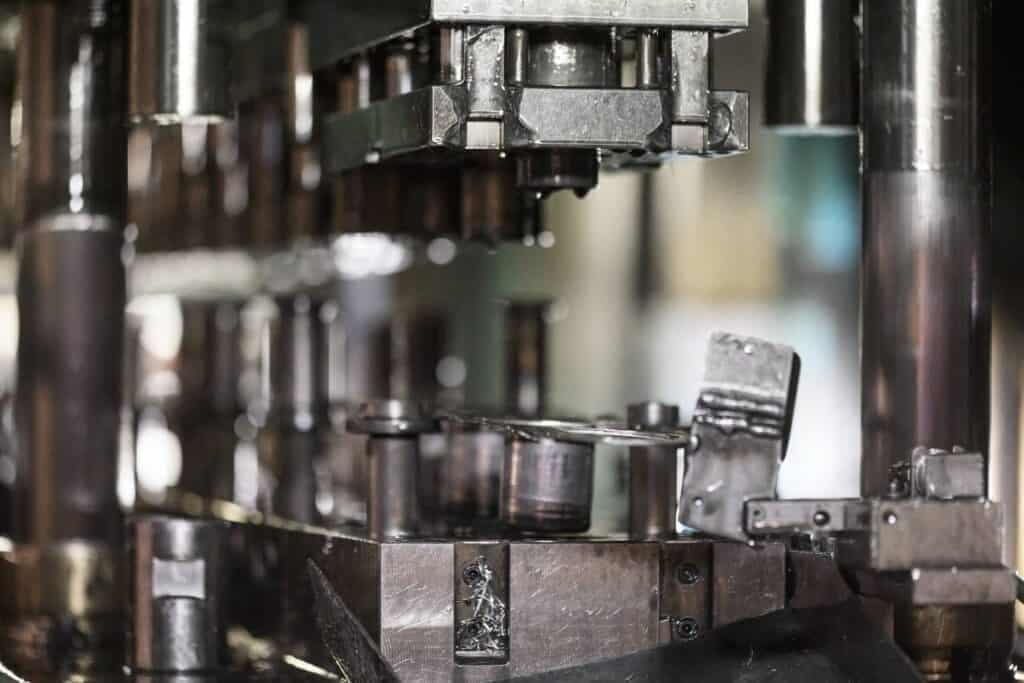Is iron or steel stronger?This is a foundational question for engineers and industrial buyers alike. While steel is generally stronger than iron, the difference lies in how each metal behaves under tension, impact, and corrosion—factors that directly affect structural performance, processing method, and cost over product lifecycle.
In this guide, we’ll compare their mechanical properties, fabrication suitability, and real-world applications so you can choose confidently based on your part requirements.
What Is Steel?
Steel is an alloy made from iron and carbon, typically containing 0.2%–2.1% carbon. Its properties vary widely depending on composition and treatment.
When alloyed with elements like chromium, manganese, or nickel, steel gains enhanced corrosion resistance, strength, or heat tolerance. Structural-grade steel ranges from 400–550 MPa in tensile strength, while high-strength grades can exceed 980 MPa. This makes steel significantly stronger than iron in most industrial applications, especially when comparing iron and steel strength under dynamic loads.
Main Categories of Steel
Carbon Steel – Common in enclosures, frames, and structural elements.
Alloy Steel – Optimized for high strength, toughness, and wear resistance.
Stainless Steel – Contains ≥10.5% chromium; ideal for food-grade or outdoor use.
Tool Steel – Exceptionally hard; used for dies, molds, and cutting tools.
Data Point: Global production exceeds 1.8 billion metric tons annually (World Steel Association), covering nearly every manufacturing sector.
What Is Iron?
Iron forms the base of steel but also has industrial applications in its raw or cast forms. It’s less ductile than steel but suitable for compression-heavy applications.
Main Categories of Iron
Pig Iron – High in carbon, used mainly in steel production.
Cast Iron – Brittle but strong under compression (700–900 MPa).
Wrought Iron – More malleable, corrosion-resistant, used in railings or fencing.
Standards Reference: Common grades include ASTM A48 (gray iron) and ASTM A536 (ductile iron).
Steel vs. Iron: A Strength and Durability Comparison
In fact, pure iron has a yield strength of approximately 7,250 psi (~50 MPa), while standard structural steels like A36 begin at 36,000 psi (~250 MPa) and can exceed 100,000 psi (~690 MPa) in high-strength grades. This vast difference in mechanical performance explains why steel dominates in load-bearing and impact-intensive applications (source).
When comparing steel vs. iron strength, steel clearly outperforms iron across most parameters. Here’s a practical comparison:
| Property | Steel | Iron |
|---|---|---|
| Tensile Strength | 400–2000 MPa | 150–300 MPa (gray/ductile) |
| Impact Resistance | High (ductile) | Low (brittle) |
| Corrosion Resistance | High (in stainless/alloy forms) | Low unless coated |
| Formability | Laser cutting, CNC bending | Cast only |
| Lifecycle Durability | Excellent | Moderate (can fracture) |
Steel gains strength from carbon and other alloying elements that disrupt the slip planes within iron’s crystalline structure. This refinement restricts dislocation movement, increasing both tensile capacity and toughness—especially in modern high-strength steels (QCForge).
When to Choose Steel or Iron
Steel Suits:
CNC-formed enclosures and custom-cut panels
Outdoor or corrosive environments (especially stainless steel)
High-load dynamic structures or precision assemblies
Iron Suits:
Cast components with high-volume consistency
Static parts like manhole covers or structural supports
Budget-driven designs with simple geometries
ASTM Data: Mild steel (A36) yield strength ≈ 250 MPa. Gray iron lacks tensile yield and may fracture under cyclic stress.
Key Considerations for Buyers
Sustainability
Steel: Over 80% of structural steel is recycled.
Iron: Cast iron is fully recyclable with high recovery rates.
Global Availability
Steel: Widely available across North America, Europe, and Asia.
Iron: More regionalized, often linked to foundry hubs.
Surface Finishing
Steel: Galvanizing, painting, powder coating available.
Iron: Requires enamel or primer to prevent rust.
Load Behavior
Steel: Excellent under both tension and dynamic stress.
Iron: Strong in compression but brittle under shock or bending.
Fabrication and Lead Time Insights
Steel
Available in standard gauges and formats.
Fast turnaround possible with laser, CNC, and robotic welding.
Iron
Requires mold tooling and longer setup.
Changes to geometry increase lead time and cost.
YISHANG reduces lead times using in-house laser and bending lines, supporting agile delivery for steel-based projects.

OEM & ODM Flexibility
Steel supports:
Prototyping and iterative changes
Branded components and modular design
Both low-volume and mass production
Iron is better for:
Unchanging, high-volume part molds
Simple shapes with low tolerance requirements
Frequently Asked Questions
Is steel stronger than cast iron?
Yes. Steel is significantly more ductile and impact-resistant than cast iron.
Which is more affordable: steel or iron?
Iron has lower initial cost, but steel often yields better value over time.
Can you laser cut cast iron?
No. Cast iron’s brittleness makes it unsuitable for high-heat precision cutting.
Does carbon steel rust?
Yes, unless treated. Galvanization or powder coating is recommended.
Which Is Stronger, Iron or Steel?
Many sourcing teams ask: which is stronger, steel or iron? The answer is clear: steel is stronger. While cast iron performs well in compression, it is brittle and prone to cracking under tension or shock. Steel, by contrast, has a much higher tensile strength and can absorb dynamic forces—making it ideal for high-performance or precision components.
Buyer Tip: Use Steel for Flexibility, Iron for Simplicity
If you need parts that require frequent design changes, precision CNC fabrication, or welding, choose steel—it’s available in standard gauges, responds well to laser cutting, and supports high-performance coatings.
Iron, on the other hand, suits unchanging high-volume parts like bases or covers, especially when casting molds are already established. Its cost advantage is clear, but strength is limited.
For most applications requiring both strength and resilience, steel is the more strategic long-term material.
Why Procurement Teams Trust YISHANG
YISHANG serves procurement officers, product engineers, and manufacturers across 50+ countries with:
CNC machining, laser cutting, forming, and welding
Surface treatment, assembly, and packaging
Custom manufacturing for vending, signage, telecom, and enclosures
Certifications: ISO 9001 & RoHS
From stainless steel brackets to cast iron bases, we help you optimize material choice for durability, lead time, and cost. Whether you’re evaluating steel vs iron for structural strength, cost-efficiency, or lifecycle performance, YISHANG can recommend the best fit for your application.
Whether you’re comparing steel vs. iron strength for structural parts, enclosures, or industrial assemblies—YISHANG helps global buyers choose the right material based on mechanical performance, compliance standards, and lead time requirements.
📩 Contact us today for a tailored quote, or upload your part drawing—we’ll help you choose between iron and steel based on function, cost, and durability.

